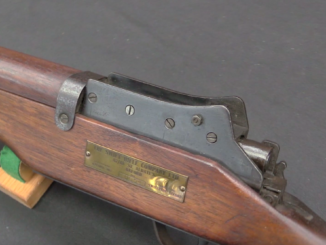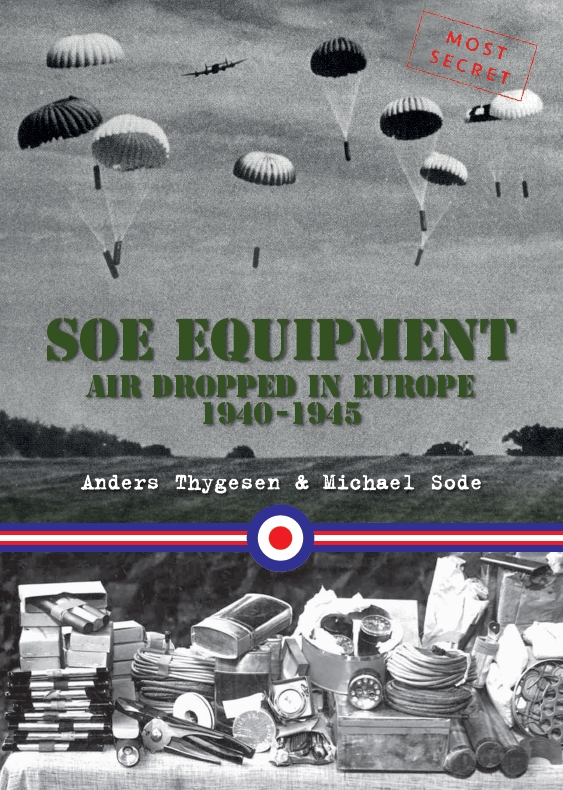From The Guardian:
The Webley Mk VI was the standard issue gun for British servicemen at the outbreak of the war. In 1996, Tolkien’s family gave the gun to the Imperial War Museum during a firearms amnesty in the UK, following the Dunblane school massacre, in which 16 children and one adult were killed. As a signalman, Tolkien took charge of communications for his battalion; it is not known if he used the weapon in battle.
Garth continued: “An Oxford-educated man, he went to war alongside labourers and miners, like Bilbo among the dwarves. He saw and probably experienced war trauma – and Frodo’s psychological journey is remarkably like the ones described by war writers such as Siegfried Sassoon. Tolkien witnessed pitiable waste of life in the mud, which shaped his famous Dead Marshes scene, where bodies of warriors appear like ghosts in the marsh pools. His passions were medieval, but his work was a response to indelible experience.”
“He also said that Sam Gamgee, in The Lord of the Rings, was ‘a reflexion of the English soldier, of the privates and batmen I knew in the 1914 war, and recognised as so far superior to myself’.”
Read the whole story: https://www.theguardian.com/books/2013/dec/12/jrr-tolkien-gun-first-world-war-manchester




There but for the grace of God go I.
It is interesting that the writer for the Guardian actually referred to Tolkien as a “signalman”, given that communications personnel were virtually always referred to as “signalers” in the British Army.
There is an update to the article:
Thanks very much, Matisse — the update is greatly appreciated.
Ian — the 11th Hour of the 11th Day of the 11th Month ( Armistice Day ) is coming up. Will there be an article to commemorate this, lest we forget?
“of the privates and batmen I knew in the 1914 war”
I am not very good at British Army organization 1914. Who batmen are in context of British Army in 1914?
https://en.wikipedia.org/wiki/Batman_(military)
Essentially a personal assistant to an officer.
A “batman” was an officer’s personal servant.
You might also want to add that the stress was placed on the first syllable, so it was BATman, not pronounced like the name of the superhero.
Obviously, some of us need to get introduced to the hilarious BBC historical satire “Captain Blackadder” – Baldrick (buffing the boots with a dead rat) was the ultimate batman of the trenches. Pretty sure they are all on Youtube.
1) Actually the title for that subset of the Blackadder Chronicles is “Blackadder Goes Forth”, that may help if you are looking on Youtube
Nurse “Oh, Edmund, have you ever met anyone you’d do anything for”
Blackadder “Yes, I have”
Nurse (coyly) “Oh…who”
Blackadder “Me”
2) The final scene, where Blackadder leads his men over the top, has moved anyone who has ever seen it and drew universal praise when it aired. It was the more effective in that it was sudden moment of seriousness in what had been continuous farce.
3) Gandalf to the Balrog “You shall NOT pass!”
Petain to the Germans “Il ne passeront pas!”
4) Virtually all Tolkein’s social class contemporaries had served at the front as junior officers. His companion in the Inklings, fellow professor Robert Graves, had first gained fame with his memoir of trenches, “Goodbye To All That”
5) The British Army clung to its class distinctions like a drowning man to a rope…officers commissioned from the ranks were referred to officially as “temporary gentlemen”!
https://en.wikipedia.org/wiki/Temporary_gentlemen
Daweo,
In the British Army of 1914, officially, Officers had ‘servants’, whilst Warrant Officers had ‘batmen’, although the two terms were in effect used interchangeably: a ‘batman’ (from bât, the French word for pack saddle, or packhorse) cleaned an Officer’s kit, carried his valise, often prepared his food in the front-line, and often acted as bodyguard or confidential runner. A good servant, or batman, freed an Officer’s time for the task of command, and often there was a close, comradely relationship between an Officer and his servant. Moreover, the provision of a batman or servant was a privilege of rank, and not a hangover from the class division of the time (a division overstated in my opinion): Warrant Officers were usually long-serving NCOs who came from working class backgrounds, and during the course of WW1 many men were commissioned, from the ranks or directly from civilian life, who were of no more of a social standing than the men who were assigned them as servants.
Thanks, in fact I tried to use Intelligence Bulletin from 1942, available here:
http://www.lonesentry.com/articles/intelligence-report/how-british-say-it.html
but it has no term batman or batmen. Also it is from 1942 so I assume it is true for 1942, but not always for other years.
How about Raymond Chandler?
Or Joyce Kilmer.
You think Kilmer is all about trees? Dig deeper.
Check out “Prayer of a soldier in France”
KIA, France, 1918.
Also, the Firearms Amendment Act 1997 is not so much thought of as an ‘amnesty’, as an act of confiscation of legally held private property. If my neighbour ploughed through a group of schoolchildren, it would be horrible. But I would not expect the government to take MY car away from me as a result.
At one point there, some of the more extreme MPs even wanted to melt down the Pattern Room collection as part of their mania for erasing the word “gun” from the British consciousness.
I’d say cooler heads prevailed, but then there were PCs with MP-5s in Heathrow and patrolling the motorways. All of a sudden Police Constable Pan Am wasn’t funny anymore; “What’s all this, then?” sounds very different when it comes from someone in body armor with a 9mm SMG in their hands.
cheers (sort of)
eon
“At one point there, some of the more extreme MPs even wanted to melt down the Pattern Room collection as part of their mania for erasing the word “gun” from the British consciousness.”
From administrative point-of-view: Who could make such decision? Who is owner of said Pattern Room? (War Office?)
You may recall moves a few years ago to rename Birminghams Gun Quarter; some find the name offensive, it would seem.
Even better, many of those stormtroopers in the Met carry a G36 in place of an MP5. I’m yet to hear a reasonable explanation for that.
And if dissidents were to “percussively and most forcefully readjust” the storm-troopers’ internal organs with improvised artillery made from steel pipes, chemistry sets, and ball bearings?
That revolver is on display at Imperial War Museum North, at Manchester. I have seen it several times and it does not display any burning runes upon its surface.
Batting services were gradually withdrawn in the British Army from the 1960s, rising through the ranks. Only officers in command of troops were allocated personal servants. In the field, an officer in command of troops will generally have a driver/radio op who will assist with administration. There is practically no formal batting service these days..
The Manchester Guardian is probably the most left wing/liberal of the UK newspapers.. the fact that the military knowledge of its journalists can be written in six foot letters on a postage stamp is widely acknowledged!
DON’t get me started on Dunblane..!
Sad his family had to turn over the gun to the government.
I would think Tolkien would have been aware that gun control leads to government genocide.
Too bad this site is turning into just another right wing whine fest.
Ian goes out of his way to bring us technical and historical information but lately the comments always degenerate into political claptrap. Not interesting. Ian’s discussion of firearms design and manufacture is so much better.
Stephen
To bad you don’t understand the simple fact the gun grabbers want it all! Don’t you understand they even want the WWW?